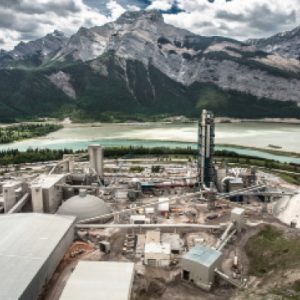Lafarge Canada Inc. and its partners – University of Calgary, Queen’s University and Pembina Institute – are conducting a million-dollar study on the environmental benefits of introducing lower carbon fuels at its Exshaw Cement Plant. Building from previous research, the multi-partner, multi-site lower carbon fuels project is the most significant of its kind in Canada, noted the company.

“Our estimates show each 20 percent incremental replacement of natural gas at the Exshaw Cement Plant with lower carbon fuels could result in the elimination of nearly 75,000 tonnes per year of CO2. This is the equivalent of taking over 16,000 cars off the road annually. While these are preliminary estimates, this research project will assess these figures precisely and in the local context,” said Rob Cumming, environmental director, Lafarge.
Eight lower carbon fuels will be researched, including construction renovation/demolition waste, non-recyclable plastic, carpets and textiles, shingles, treated wood products, wood products, rubber and tire derived fuels. These sources of fuel have been successfully used at other Lafarge cement plants in Canada and around the world.
Air quality and traffic impact studies predict minimal changes with introducing lower carbon fuels at the Exshaw plant. Additional research by the partners will measure the environmental components associated with the sourcing, processing and full-scale commercial operation of each lower carbon fuel compared to fossil fuels. The project will also measure the benefits of diverting materials from landfills and determine optimal points in the cement manufacturing process to inject each fuel.
“Lab simulations, environmental studies, economics and logistics reviews are already underway. All research will be finalized by December 2019 with regular updates provided to the neighboring communities via a Public Advisory Committee,” said Jim Bachmann, Exshaw plant manager.
In addition to Lafarge’s support, research funding is being provided by Alberta Innovates, Ontario Centres of Excellence (OCE), Emissions Reduction Alberta (ERA), and the Natural Sciences and Engineering Research Council of Canada (NSERC). It includes research by Millennium EMS Solutions Ltd., Geocycle and WSP Global Inc.
In alignment with LafargeHolcim’s 2030 Sustainability Plan, Lafarge aims to replace 30 to 50 percent of fossil fuel use at its Canadian cement plants with lower carbon fuels by 2020.

